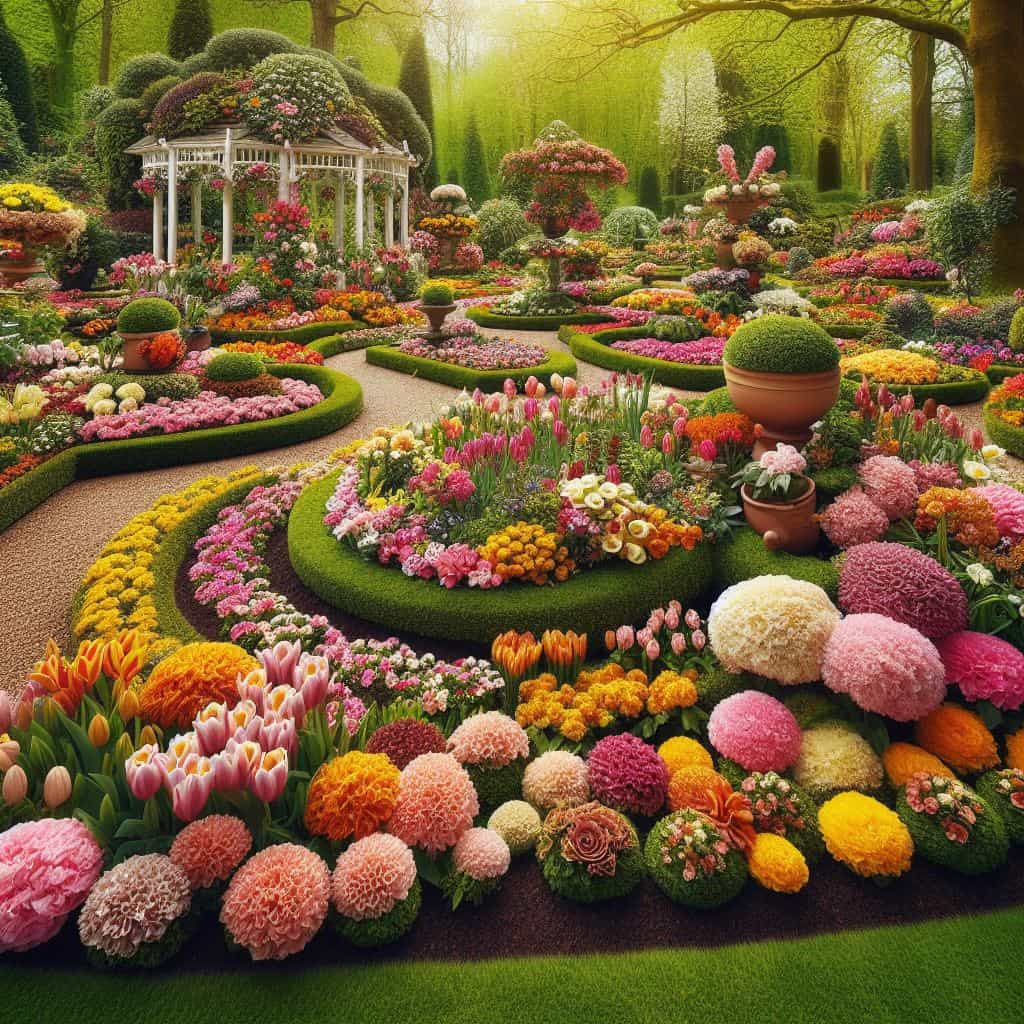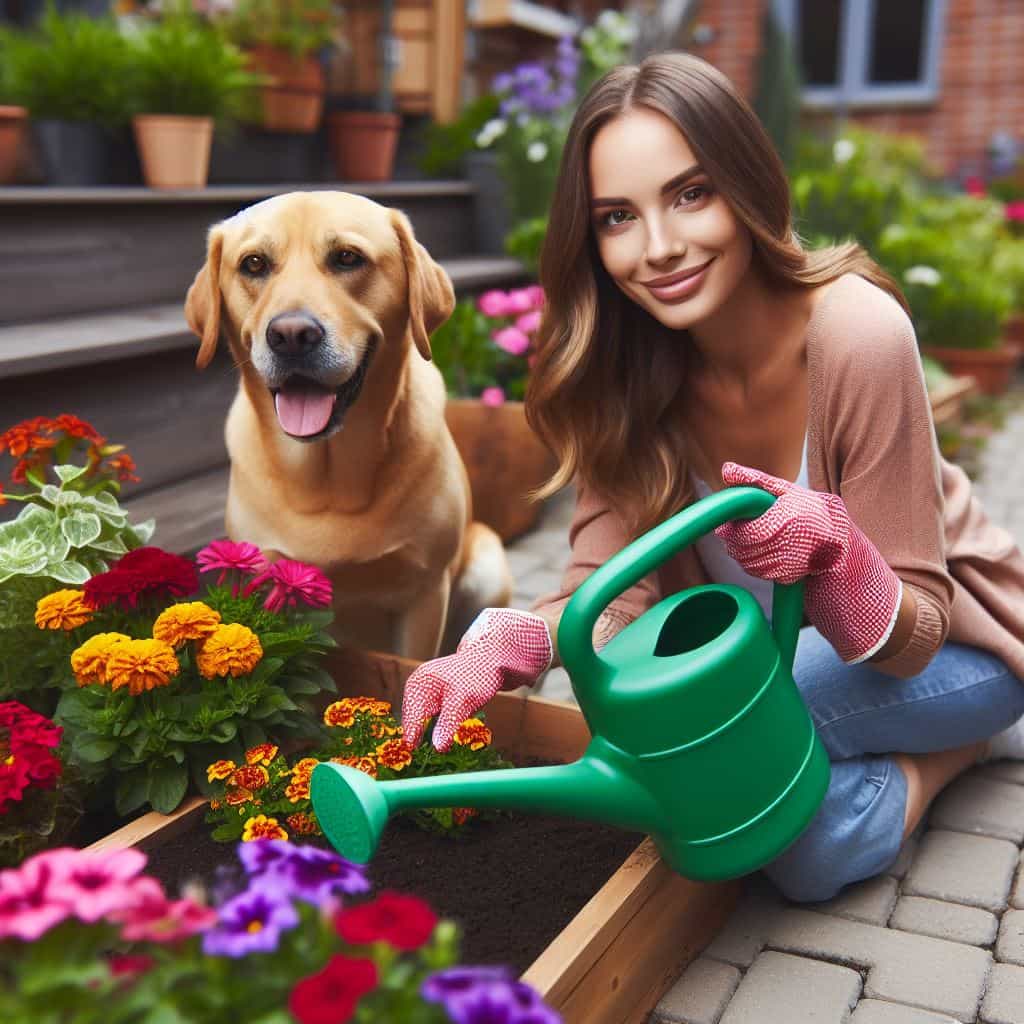Flowerbeds and flower gardens serve as the showcase of any garden or backyard area. Their vibrant colors and diverse shapes create a cozy and attractive atmosphere, pleasing the eye and filling the air with incredible fragrances. However, to achieve this splendor, it is essential not only to create a colorful design but also to choose the right plants, considering their needs and characteristics. In this article, we will explore important aspects of arranging and caring for flowerbeds and gardens: from selecting suitable plants to caring for the soil and design elements.
Plant Selection
Choosing the right plants is a crucial step in creating beautiful and well-maintained flowerbeds. It involves not only an aesthetic aspect but also considerations of climatic conditions, soil type, and the desired color ensemble.
Let us go through the key steps that will help you make informed decisions when selecting plants to create magnificent floral compositions.
Consider Climatic Conditions
The first step in plant selection is, considering the climatic conditions of your region. Some plants thrive in sunny locations, requiring abundant sunlight, while others prefer partial shade or full shade. It is also important to take into account the hardiness of the plants, humidity levels, and temperature fluctuations.
Analyze Soil Type
Different plants prefer specific soil types. Some require good drainage, while others can adapt to more moist conditions. Conduct a soil analysis on your site and choose plants that thrive in the particular soil present. Remember that improving soil with organic fertilizers may also be a necessary step.
Plan Harmonious Compositions
When choosing plants, pay attention to colors, shapes, and height. Combining colors and textures, helps create harmonious compositions. Place plants considering their future growth to prevent shaded areas due to neighboring taller plants.
Plant Examples
Let us look at a few examples of plants along with their descriptions and care tips:
Roses (Rosa)
- Description: Roses, the queens of the garden, symbolize passion and beauty. With over 100 species and thousands of varieties, including miniature and densely flowering types, they impress with their diversity.
- Growing Conditions: Roses prefer sunny locations with good drainage. There are varieties resistant to various climatic conditions.
- Care: Regular watering, organic fertilization in spring, shaping the bushes, and pruning faded flowers.
Lavender (Lavandula)
- Description: Lavender is a fragrant plant with narrow linear leaves and lavender-colored spike-like inflorescences. Known for its soothing aroma and medicinal properties.
- Growing Conditions: Lavender loves sun and good drainage, and it is drought-resistant.
- Care: Regular pruning after flowering to maintain a compact form. Winter mulching in cold regions.
Peony (Paeonia)
- Description: Peonies are luxurious flowers with large double buds, available in various shades from white to rich colors. Symbolize wealth and happiness.
- Growing Conditions: Peonies prefer sun or partial shade and fertile soil. They can thrive in the same spot for many years.
- Care: Watering during drought, fertilization with a balanced fertilizer in spring, and providing support.
Irises (Iris)
- Description: Irises are elegant flowers with distinctive sword-shaped leaves and bright, diverse flowers, including bearded irises.
- Growing Conditions: Irises love sun and light, well-drained soil. They can thrive for many years.
- Care: Regular removal of faded flowers and dividing the clumps every few years.
Tulips (Tulipa)
- Description: Tulips are spring flowers with various forms and colors, symbolizing spring renewal and beauty.
- Growing Conditions: Tulips prefer sun and well-drained soil. They work well in beds and containers.
- Care: Watering during dry periods, organic fertilization in spring, and digging up bulbs for storage after flowering.
By choosing plants wisely, you can create stunning flowerbeds that will delight the eye throughout the season. Next, we will explore how to ensure proper soil care and add design elements to make your garden a true corner of natural beauty.

Caring for Soil and Decoration
- Soil Improvement
Successful plant development is impossible without fertile soil. Before planting, it is crucial to enhance the soil by incorporating organic matter such as manure, compost, or peat. This not only provides plants with essential nutrients but also improves soil permeability and structure.
- Watering
Regular and proper watering is a key element in caring for flowerbeds and flower gardens. The moisture level should be adapted to the specific needs of the plants. It is important to avoid excess moisture to prevent root rot, while also preventing soil from drying out.
- Mulching
Applying mulch around plants is an effective way to retain moisture in the soil, suppress weeds, and maintain a consistent temperature. Organic mulch, such as straw, peat, or wood bark, gradually decomposes, enriching the soil.
Pruning and Maintenance of Shape
Regular pruning is an essential component of caring for flowerbeds. Removing faded flowers and excess branches promotes more intense flowering and maintains the compactness of plants. It is important to monitor the shape of plants to prevent overlap and create a harmonious appearance for the flowerbed.
Decorative Elements
Decorating flowerbeds and flower gardens gives them individuality and style. A variety of decorative elements may include:
- Decorative stones and pebbles: Use them to create patterns, paths, or borders for flowerbeds.
- Sculptures and figures: Add artistic elements to create a unique focal point in the garden.
- Lighting: Place solar lanterns, torches, or LED garlands to create a cozy atmosphere in the evening.
- Decorative pots and containers: A variety of shapes and sizes add interest to the composition.
Combining soil care with creative decoration helps create attractive, well-maintained flowerbeds and gardens. With each season, your garden will flourish in full bloom, bringing joy and tranquility.

Conclusion
Creating colorful flowerbeds and gardens is an art that requires attention to detail and love for plants. In this article, we have explored important aspects of placing and caring for these corners of natural beauty, from choosing suitable plants, considering climate and soil characteristics, to soil care and creative decoration.
By selecting diverse and popular plants such as roses, lavender, peonies, irises, and tulips, you can create unique compositions, filling the garden with a variety of shapes and colors. Thorough soil care, proper watering, and bed decoration add harmony and style to the garden.
Remember that gardening is a creative process, and each participant in this process – be it a plant, shrub, or flower – contributes to the overall symphony of nature. Let your garden be not only a place of beauty but also a source of serenity, inspiration, and joy. Therefore, care for your plants with love, and they will respond with vibrant and exciting blossoms.



